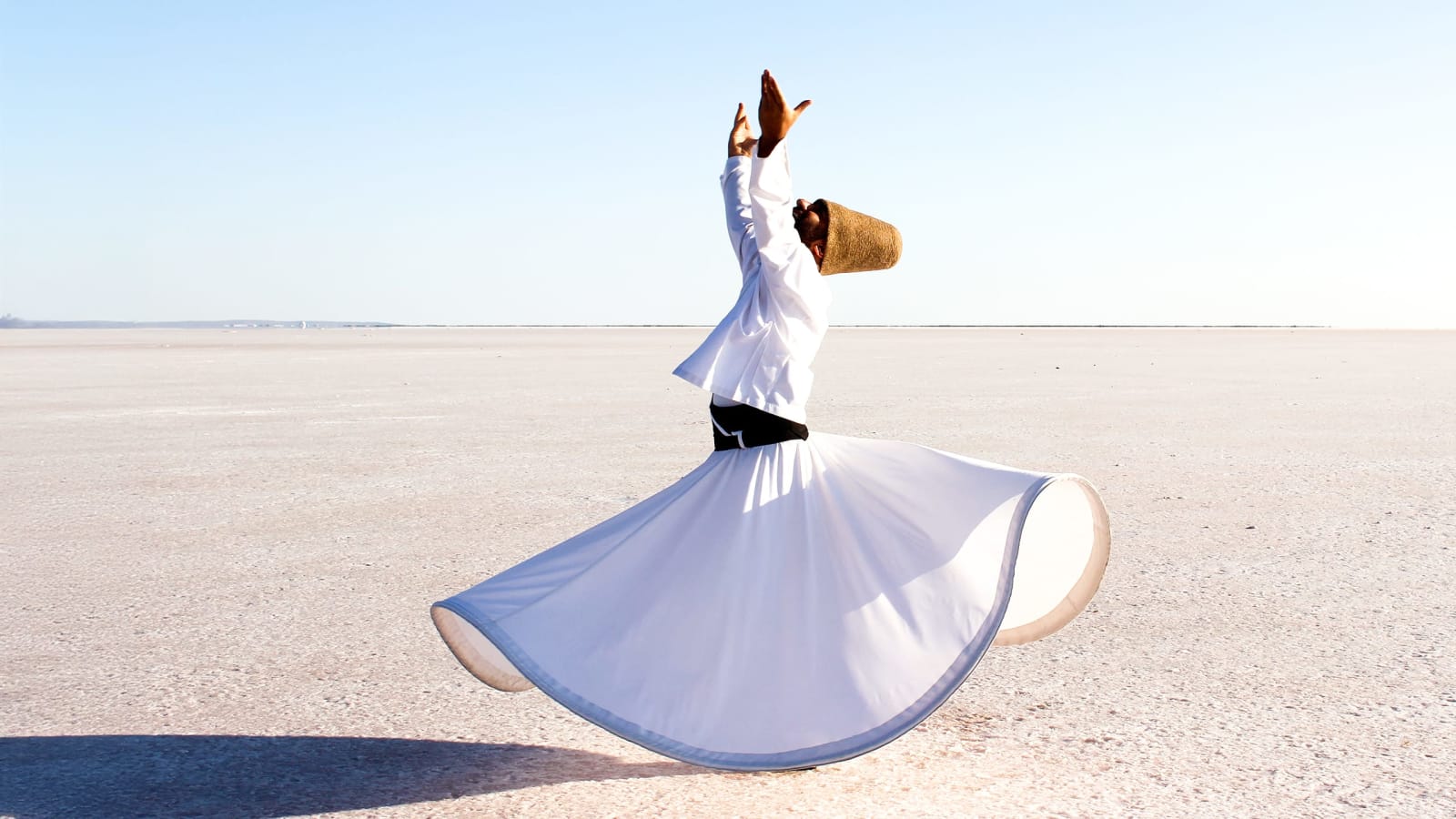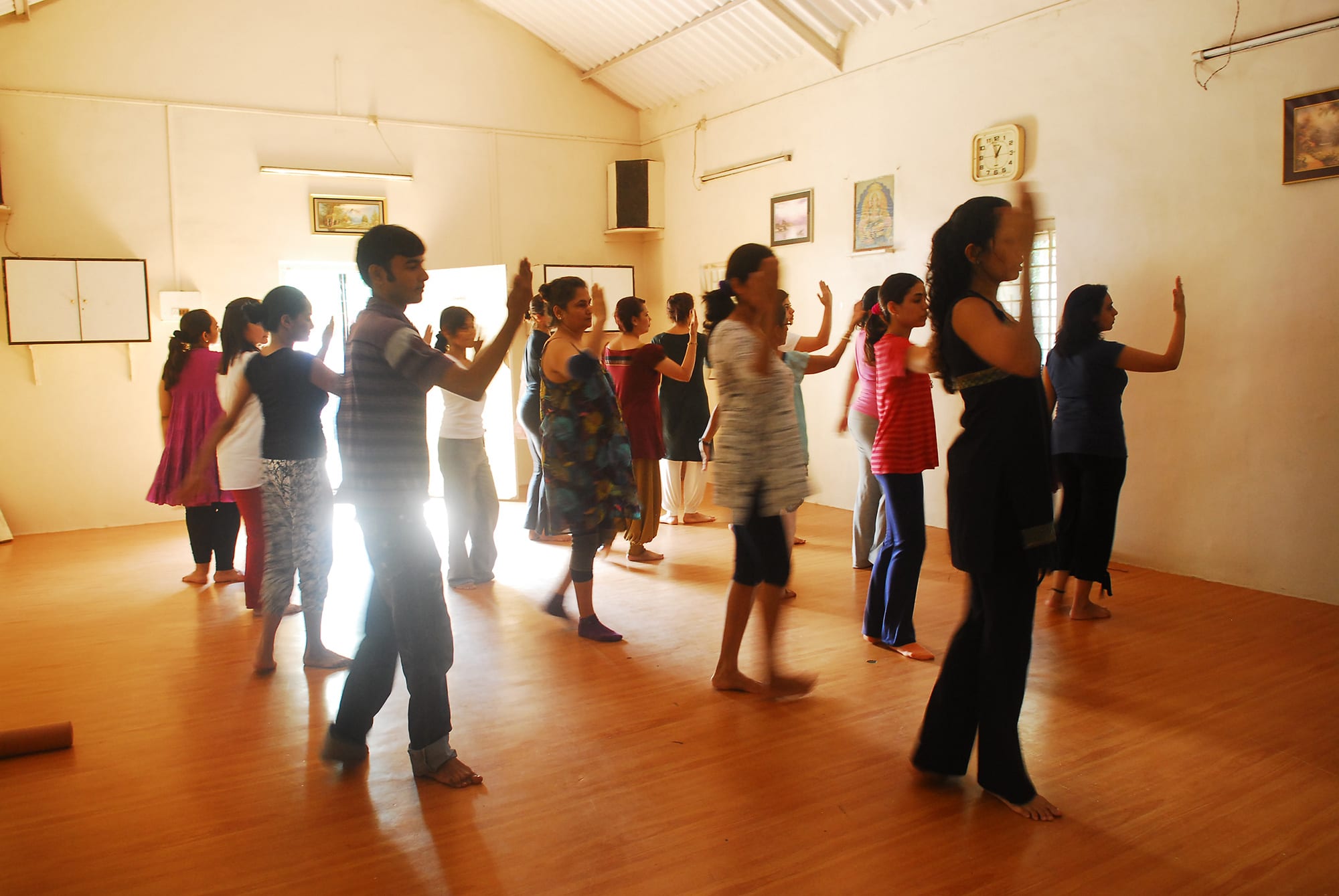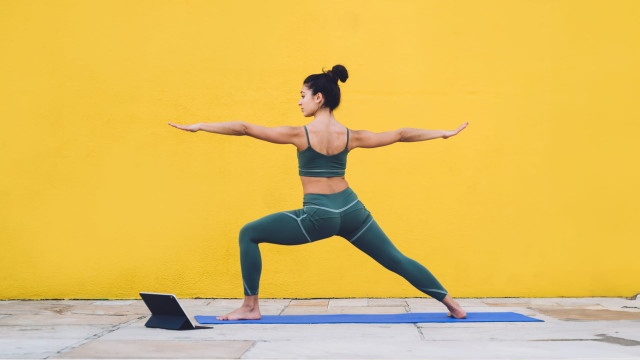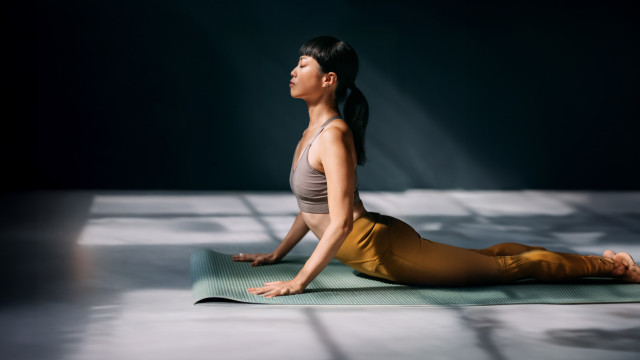Find Your Center with Whiring

The movement-based meditation known as whirling is a beautiful and sacred practice that has brought incredible peace to my life. It has also helped me develop a keen attention and awareness in the present moment. This polarity is what makes whirling beautiful — we are moving in freedom while being perfectly aware, and over time, this sharpens our consciousness.
When dancers turn, they use a “spot” outside of themselves to hold balance. As long as they can spot outside, they are able to continue turning. But there's a limitation to how many turns a dancer can do, and how free their body is, because they are dependent on something outside of themself.
People often think that dancers will be naturals at whirling, but this is not necessarily the case — unlike the turns a dancer does that require an external focus point, whirling comes from within.
The Discipline of Whirling
To whirl as a meditative art form, a whirler turns their attention inward and anchors their focus on internal balance to remain centered and stable. In whirling, we release dependence on the outside world.
It’s easy to keep whirling while maintaining a natural upright body posture. However, it’s not an easy practice to put your head up, bend your spine, and let the hands freely move and keep spinning endlessly while the eyes have nothing to focus on outside.
In order to whirl and maintain the motion, one must develop a deep inner centering. In this, we learn to balance and live more presently. We learn to watch how discomfort may arise and disappear naturally as we maintain our steady whirling practice.
When we sustain the discipline of whirling, the body reorganizes, releases, and realigns itself back to a more natural form. We just watch this unfold — this is where we bring in the “witness consciousness” and watch as if we are witnessing a river flow. While whirling, we can see emotions rise then fall as they leave our body.
All that is needed is a personal discipline to find that inner balance to whirl, and a sustained practice to support the release. In this space, we find a stable field of consciousness. This learning can be a deep medicine.
Our Inner Compass
Whirling allows a physiological experience to cultivate an inner sense of stability, which can be helpful when we face traumatic storms in our everyday life. Through the discipline of whirling, we learn how to center, allowing us to maintain equanimity in the face of chaos.

When we use whirling as a therapeutic practice, trauma may arise and start to feel like a storm is brewing within us. Whirling allows us to act as a witness, hold our center, and recognize any traumas as a story from the past.
This is because whirling is a presence-oriented activity. In order to keep whirling, we must keep our continued presence on our body without getting distracted by the stories that arise. We watch the stories from a still point within.
We see clearly the story is not our reality — we are right now in our center, and that center allows the body to reorganize itself. Whirling helps us to develop our inner compass, our inner knowing to navigate in the world. Once you no longer need an external “spot” to focus on, you can keep turning — and forging on in life — indefinitely.
Try this course, Whirling: A Centering Practice for Heart-Body Connection, with sacred dance teacher Zia Nath, to learn more about the how this meditation form may impact your overall wellbeing.
Photos courtesy of Zia Nath








